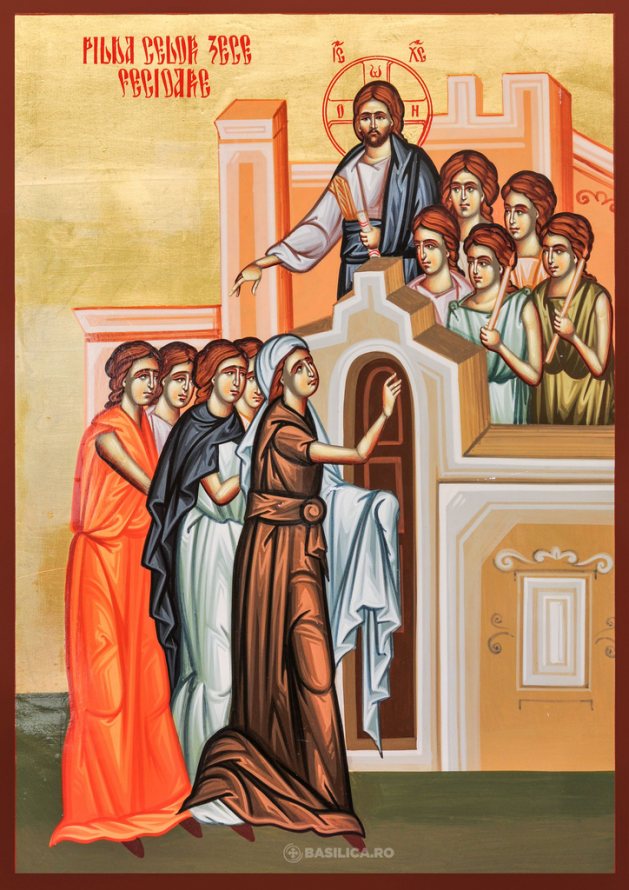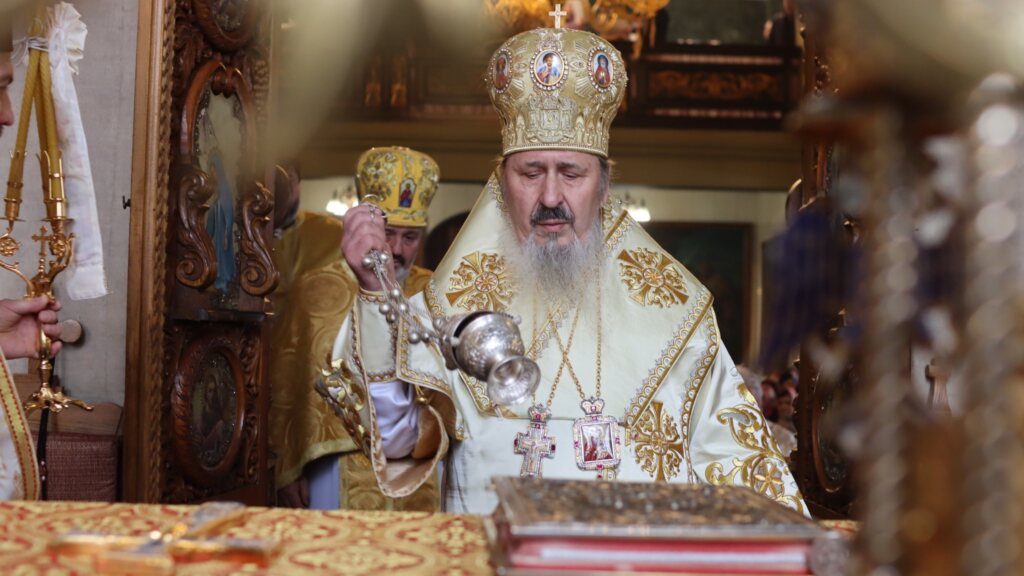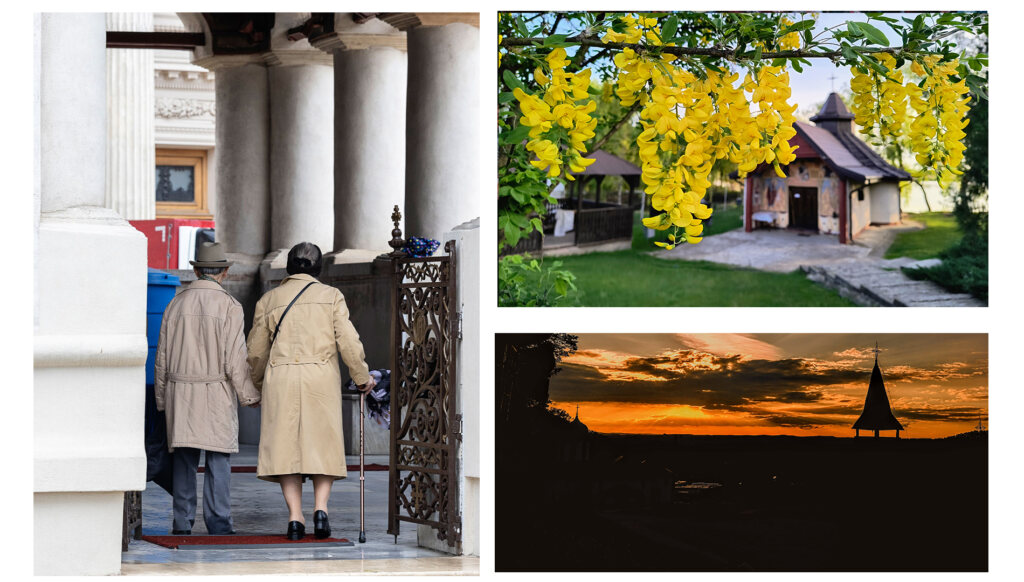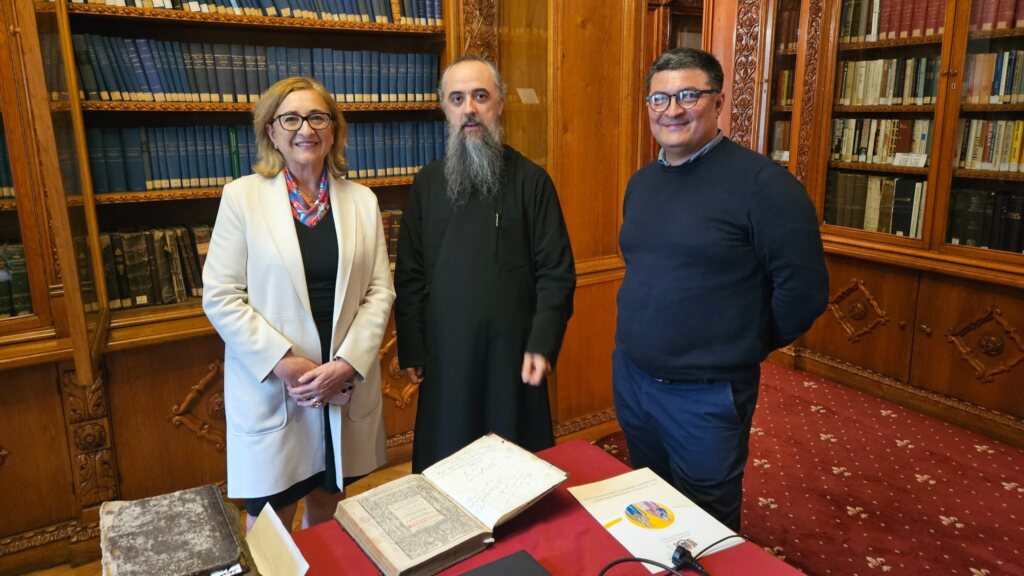The Pascha of Jesus signified its end to “this world” and it has been at its end since then. This end can last for hundreds of centuries this does not alter the nature of time in which we live as the “last time.” “The fashion of this world passeth away…” (I Cor. 7:31).
Pascha means passover, passage. The feast of Passover was for the Jews the annual commemoration of their whole history as salvation, and of salvation as passage from the slavery of Egypt into freedom, from exile into the promised land. It was also the anticipation of the ultimate passage—into the Kingdom of God. And Christ was the fulfillment of Pascha. He performed the ultimate passage: from death into life, from this “old world” into the new world into the new time of the Kingdom.
And he opened the possibility of this passage to us. Living in “this world” we can already be “not of this world,” i.e. be free from slavery to death and sin, partakers of the “world to come.” But for this we must also perform our own passage, we must condemn the old Adam in us, we must put on Christ in the baptismal death and have our true life hidden in God with Christ, in the “world to come….”
And thus Easter is not an annual commemoration, solemn and beautiful, of a past event. It is this Event itself shown, given to us, as always efficient, always revealing our world, our time, our life as being at their end, and announcing the Beginning of the new life…. And the function of the three first days of Holy Week is precisely to challenge us with this ultimate meaning of Pascha and to prepare us to the understanding and acceptance of it.
On Tuesday:
At Matins: Matthew 22: 15-23, 39. Condemnation of Pharisees, i.e. of the blind and hypocritical religion, of those who think they are the leaders of man and the light of the world, but who in fact “shut up the Kingdom of heaven to men.”
At the Presanctified Liturgy: Matthew 24: 36-26, 2. The End again and the parables of the End: the ten wise virgins who had enough oil in their lamps and the ten foolish ones who were not admitted to the bridal banquet; the parable of ten talents “. . . Therefore be ye also ready, for in such an hour as ye think not the Son of Man cometh.” And, finally the Last Judgment.
3. These Gospel lessons are explained and elaborated in the hymnology of these days: the stichiras and the triodia (short canons of three odes each sung at Matins). One warning, one exhortation runs through all of them: the end and the judgment are approaching, let us prepare for them:
“Behold, O my soul, the Master has conferred on thee a talent
Receive the gift with fear;
Lend to him who gave; distribute to the poor
And acquire for thyself thy Lord as thy Friend;
That when He shall come in glory,
Thou mayest stand on His right hand
And hear His blessed voice:
Enter, my servant, into the joy of thy Lord.”
(Tuesday Matins)
4. Throughout the whole Lent the two books of the Old Testament read at Vespers were Genesis and Proverbs. With the beginning of Holy Week they are replaced by Exodus and Job. Exodus is the story of Israel’s liberation from Egyptian slavery, of their Passover. It prepares us for the understanding of Christ’s exodus to His Father, of His fulfillment of the whole history of salvation. Job, the Sufferer, is the Old Testament icon of Christ. This reading announces the great mystery of Christ’s sufferings, obedience and sacrifice.
5. The liturgical structure of these three days is still of the Lenten type. It includes, therefore, the prayer of Saint Ephrem the Syrian with prostrations, the augmented reading of the Psalter, the Liturgy of the Presanctified Gifts and the Lenten liturgical chant. We are still in the time of repentance for repentance alone makes us partakers of the Pascha of Our Lord, opens to us the doors of the Paschal banquet. And then, on Great and Holy Wednesday, as the last Liturgy of the Presanctified Gifts is about to be completed, after the Holy Gifts have been removed from the altar, the priest reads for the last time the Prayer of Saint Ephrem. At this moment, the preparation comes to an end. The Lord summons us now to His Last Supper.
by ALEXANDER SCHMEMANN
Saint Pachomius was born in 1674, in Gledin village, Bistriţa-Năsăud region. Having been brought up by parents obedient to God, he became a true follower of Christ and because the Orthodox faith was persecuted in Transylvania he left his parents’ house and went to Moldavia, to Neamţ Monastery, where he joined monastic life and later on was consecrated as priest.
After abbot John has fallen asleep into the Lord, the monastic community elected Venerable Pachomius as abbot, although he did not want that. Longing to live an ascetic life, the Saint left the igumen’s position after only two years and went to meet the great spiritual father Saint Demetrius of Rostov († 1709).
After living for two years in Russia, Saint Pachomius came back to Neamţ, but he did no longer accept to be abbot, and retired together with four of his disciples to a secluded place in the forests around, where he set up a skete. But neither there could he enjoy the peacefulness and quietness he loved so much because after two years he was elected bishop of Roman (1707-1714).
Given this new task, although Saint Pachomius yearned for a secluded life, prayer and study, he turned out to be a good administrator and custodian, taking good care also of the material needs of his eparchy.
After seven years he retired from the episcopal see and went back to his hermitage, where he built a church, dedicating it to the Holy Protecting Veil of the Mother of God, naming the monastic settlement Pocrov Skete. The rule Saint Pachomius set up was the following: the monks kept always silent, never ate meat, spent all night in vigil, and always fully obeyed the igumen.
Saint Pachomius was one of the most remarkable educated clergymen of his time, a monk with humble thinking and ardent love for Christ, shining in the Church through the holiness of his life. He loved ascetic life, but he joined, through discernment, prayer with the work of the body and of the mind, in the healthy tradition of the ancient Romanian hesychastic monasticism.
Saint Pachomius has fallen asleep into the Lord on 14 April 1724, while he was at Pechersk Lavra in Kiev. Soon, igumen Lazar from Pocrov brought his body to the skete he had founded and buried it in the nave.
Saint Hierarch Pachomius was placed among saints through the Tomos of the Holy Synod of the Romanian Orthodox Church of 14 November 2006. By God’s will, on 9 September 2013 the Saint’s holy relics were found in the nave, where from they were abundantly spreading a nice fragrance.
Through his holy prayers, Lord Jesus Christ, our God, have mercy on us. Amen.
Tr by oca.org






